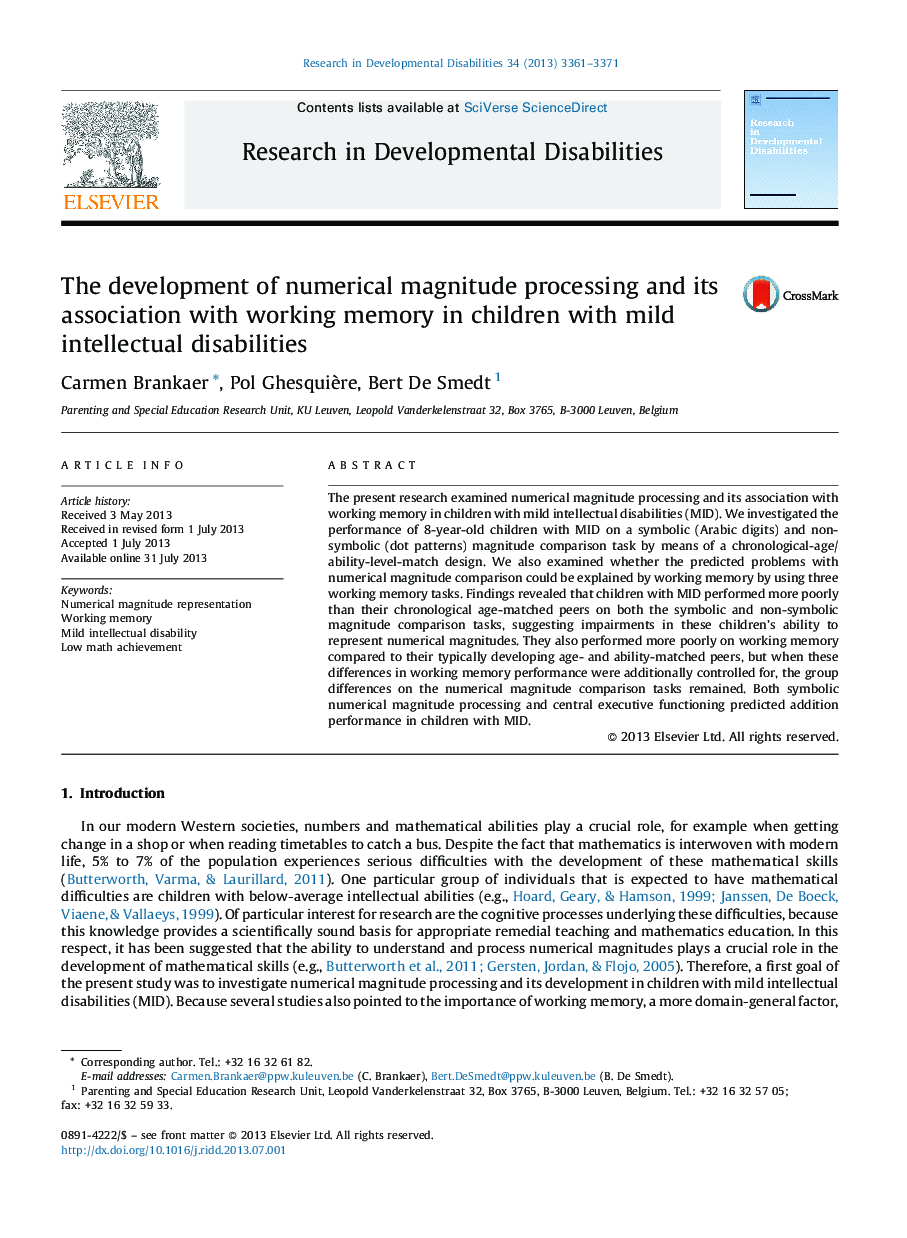| Article ID | Journal | Published Year | Pages | File Type |
|---|---|---|---|---|
| 10317907 | Research in Developmental Disabilities | 2013 | 11 Pages |
Abstract
The present research examined numerical magnitude processing and its association with working memory in children with mild intellectual disabilities (MID). We investigated the performance of 8-year-old children with MID on a symbolic (Arabic digits) and non-symbolic (dot patterns) magnitude comparison task by means of a chronological-age/ability-level-match design. We also examined whether the predicted problems with numerical magnitude comparison could be explained by working memory by using three working memory tasks. Findings revealed that children with MID performed more poorly than their chronological age-matched peers on both the symbolic and non-symbolic magnitude comparison tasks, suggesting impairments in these children's ability to represent numerical magnitudes. They also performed more poorly on working memory compared to their typically developing age- and ability-matched peers, but when these differences in working memory performance were additionally controlled for, the group differences on the numerical magnitude comparison tasks remained. Both symbolic numerical magnitude processing and central executive functioning predicted addition performance in children with MID.
Related Topics
Life Sciences
Neuroscience
Behavioral Neuroscience
Authors
Carmen Brankaer, Pol Ghesquière, Bert De Smedt,
